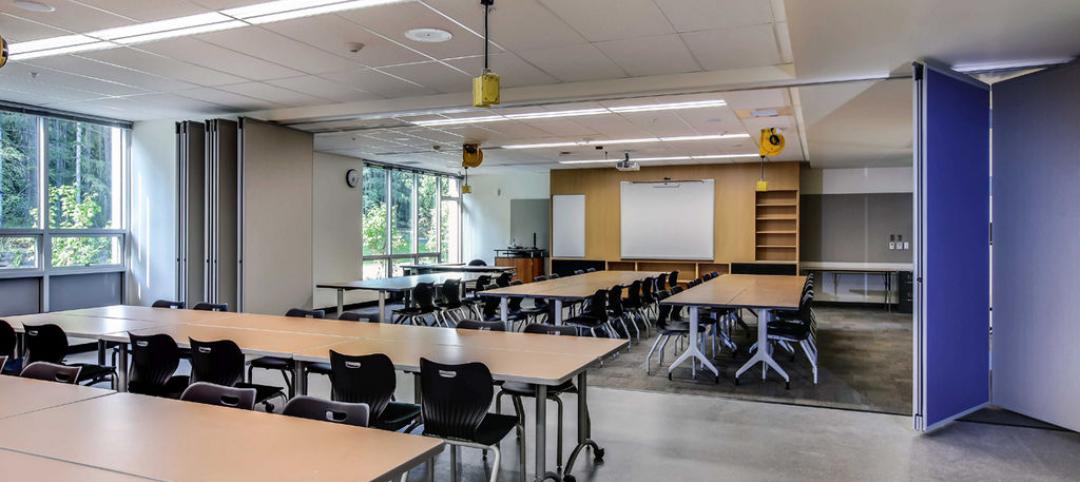In 1995, the city of New Haven, Conn., launched a program to build five new schools and renovate and upgrade seven others. At the time, city officials could not have envisioned their program morphing into a 17-year, 44-school, $1.5 billion project to completely overhaul its entire portfolio of K-12 facilities for nearly 23,000 students.
New Haven's massive undertaking is being handled by the Glastonbury, Conn., office of program manager Gilbane Building Companies (ranked #7 for CMs on BD+C's 2006 Giants 300 list), whose responsibilities on the project evolved along with the project itself.
Gilbane was originally hired as one of three construction managers who were to divvy up work on an 11-school, $23 million program. It didn't take long, however, for New Haven school officials to realize that they lacked the skills and resources to oversee the project, so Gilbane found itself competing for—and winning—the role of program manager. In 1998, the firm was asked to review the district's master plan; two years later, they unveiled a new multiphase plan that involved construction and renovation of 46 schools (later trimmed to 44), with a budget exceeding 10 figures.
Gilbane VP Tom Rogér says it took some time for the firm to gain the city's trust. “The first couple of years, there was a real learning curve on both our parts,” says Rogér. “What helped us a lot was that when we said something was going to happen, it happened. That was something they weren't used to. It was a revelation!”
Those hallelujah moments led to the city's approval of the dramatically expanded construction program. “After things started happening and they believed that our project work wasn't b.s., the city's board of aldermen asked why we weren't doing every single school,” says Rogér. The city even used the construction program as an opportunity to realign its grade structure, eliminating middle schools (which had performance, staffing, and safety problems) and creating K-8 facilities and 9-12 high schools.
Funding the original 11-school program involved a “stroke of genius” by the city's finance director, according to Rogér. The finance director bundled 300-400 tax-delinquent properties and sold them to a developer for $23 million, all of which went into a school construction trust fund. Later, the city relied on its bonding authority to fund the projects without having to rely on voter referendums.
One early decision rested on the design of the schools. “From a cost and schedule standpoint, I suggested using templates, and I got an emphatic no,” says Rogér. “They wanted each project to have its own architectural identity.” As a result, each school has a program appropriate to its neighborhood and academic focus. To maintain consistency and continuity, however, Gilbane authored a set of building standards (now in its ninth edition) that Building Teams are required to follow.
Working with 20 different architects and 10 different construction management firms proved wearying at times, but Rogér says that Gilbane made it clear that their firm was running the program and that they would manage it to everyone's advantage. “That added a lot of trust and credibility,” says Rogér. While Gilbane manages the RFQ process, however, the city makes the ultimate decision on which firms get the jobs.
Currently, there are 22 completed school projects and 10 active projects: five under construction and five in the design phase. The first was completed in 1998 and the last school is expected to be finished in 2012, at which time the program will have constructed 4.5 million sf. At its peak in 2006, Gilbane had a dedicated full-time staff of 22 on the projects; current staff totals 17. About 80-90% of the staff came from within Gilbane.
“One of the biggest benefits to New Haven—or any school district—is that hiring an outside program manager lets you hit the ground running with experienced people, systems, and relationships to make things happen,” says Rogér. “A public entity has to staff up or convert existing in-house staff to run a program of this size. Your building engineer who's been doing sidewalks for the past few years should never be put in the position to oversee a $1.5 billion program.”
On the other hand, Roger acknowledges, “there are some programs where the in-house people hate you because they think they could do a better job. We were lucky, in that the city tried to do the work themselves for a couple of years and they saw how hard it was. New Haven is happy to have us.”
|
Related Stories
| Mar 12, 2014
14 new ideas for doors and door hardware
From a high-tech classroom lockdown system to an impact-resistant wide-stile door line, BD+C editors present a collection of door and door hardware innovations.
| Mar 4, 2014
If there’s no ‘STEM crisis,’ why build more STEM schools?
Before you get your shorts in a knot, I have nothing against science, technology, engineering, or even mathematics; to the contrary, I love all four “STEM” disciplines (I’m lying about the math). But I question whether we need to be building K-12 schools that overly emphasize or are totally devoted to STEM.
| Feb 26, 2014
Adaptive reuse project brings school into historic paper mill
The project features nontraditional classrooms for collaborative learning, an arts and music wing, and a technologically sophisticated global resource center.
| Feb 14, 2014
Crowdsourced Placemaking: How people will help shape architecture
The rise of mobile devices and social media, coupled with the use of advanced survey tools and interactive mapping apps, has created a powerful conduit through which Building Teams can capture real-time data on the public. For the first time, the masses can have a real say in how the built environment around them is formed—that is, if Building Teams are willing to listen.
| Feb 5, 2014
'School Security' PDF available to BD+C readers - CORRECTED
I've received several requests from BD+C readers who design and build K-12 schools about the 3-part series we ran in our January issue ("Can Design Prevent Another Sandy Hook?"). They wanted to send the issue to their school boards and other public officials with responsibility for school safety. In light of the importance of this topic, as a special service to our readers we're making the series available in PDF form.
| Feb 5, 2014
Extreme conversion: Atlanta turns high-rise office building into high school
Formerly occupied by IBM, the 11-story Lakeside building is the new home for North Atlanta High School.
| Jan 30, 2014
What to expect in the metal building industry in 2014
Every year brings changes. This one won’t be any different. We’ll see growth in some areas, declines in others. Here’s a little preview of what we’ll be writing about 2014 when 2015 comes rolling in.
| Jan 28, 2014
White Paper: How metal buildings deliver long-term value to schools
A new white paper from Star Building Systems outlines the benefits of metal buildings for public and private school building projects.
| Jan 28, 2014
16 awe-inspiring interior designs from around the world [slideshow]
The International Interior Design Association released the winners of its 4th Annual Global Excellence Awards. Here's a recap of the winning projects.
| Jan 15, 2014
Report: 32 U.S. buildings have been verified as net-zero energy performers
The New Buildings Institute's 2014 Getting to Zero Status report includes an interactive map detailing the net-zero energy buildings that have been verified by NBI.
















